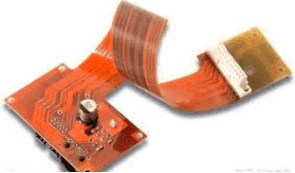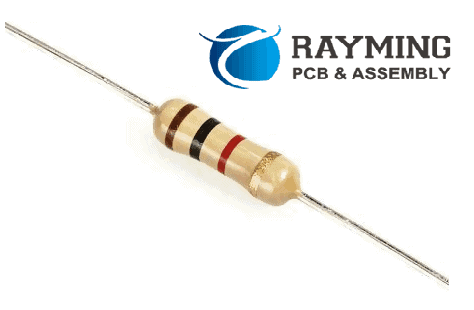Introduction
Printed circuit boards (PCBs) are at the heart of electronics hardware design and new product development. For engineers and designers, having the ability to quickly fabricate prototype PCBs enables faster iteration and testing during the critical design phases.
Rapid PCB prototyping with fast turnarounds is key to accelerating time-to-market and achieving first-mover advantage. However, finding PCB manufacturers who can reliably deliver quality boards with short lead times can be challenging.
This guide covers strategies for procuring fast prototype PCBS, including:
- Typical PCB fabrication lead times
- Manufacturing methods for quick-turn boards
- Domestic vs. international sourcing options
- Cost tradeoffs for expedited fabrication
- Ordering processes for rapid prototyping
- Testing considerations for quick-turn PCBs
- Transitioning to medium volume production
Follow these best practices to locate a PCB manufacturer that can accelerate your hardware prototyping and new product development.
Overview of Typical PCB Fabrication Lead Times
Standard lead times for printing circuit board delivery varies based on location, capability, and capacity:
Domestic PCB Shops
- 24-48 hours – Simple single/double layer boards
- 3-5 days – More complex multilayer boards
- 10-15 days – Standard turn for most manufacturers
Asian Fabricators
- 10-15 days – Normal turnaround time
- 5-7 days – Expedited turnaround options
- 4-6 weeks – Lead time for complex, high-reliability boards
Other Considerations
- Time for order processing and engineering reviews
- Position in production queue
- Order urgency and rush fees
- Shipping transit time
Understanding baseline lead times helps estimate how soon PCB prototype orders can be delivered. Additional fees often provide for expedited fabrication.
Fast-Turn PCB Manufacturing Methods

Several PCB fabrication processes enable faster prototyping turnarounds:
Milling/Routing
- Direct mechanical milling of copper traces
- 24-48 hour or faster turnaround
- Limited to simpler board designs
Laser Direct Imaging (LDI)
- Laser ablation of copper layers
- Fast processing of boards up to 6 layers
- Higher resolution than milling
Photolithography
- Using photoresists and etching
- Enables high layer counts and density
- More time needed than LDI or milling
Additive/Semi-Additive PCB Printing
- Direct metallization of traces
- Very fast single or double layer boards
- Lower feature resolution than etching
Selecting manufacturers with the right quick-turn fabrication technologies is key to rapid prototyping.
Domestic vs. International PCB Manufacturers
Domestic PCB shops in North America and Europe offer the fastest turnarounds but at higher costs. Overseas Asian options have longer lead times but lower prices.
Domestic PCB Fabricators
- Lead times as fast as 24-48 hours
- Rush ordering and quick fab processes
- Higher quality and consistent communication
- Much higher costs for low volume
Asian Manufacturing
- 10-15 day standard lead time
- 5-7 days achievable for rush orders
- Affordable costs at low volumes
- Communication and logistics delays
For prototyping needing very quick 1-3 day delivery, domestic manufacturers are likely required. For 5-7 day expedited turns, offshore production may be feasible.
Cost Tradeoffs for Expedited PCB Delivery
Various surcharges and fees are common for fast PCB prototyping, including:
- Rush Ordering: 24-48 hour lead times incur at least 50-100% expedite fees.
- Faster Shipping: Express international shipping can cost $100+ per order.
- Expedited Processing: Fees for prioritized fab slot and overtime.
- Inventory Surcharges: Some manufacturers charge for pulling standard materials from stock.
- Small Order Quantities: 1-5 piece orders often have additional fees.
Cost Saving Opportunities:
- Review design to panelize multiple boards when suitable.
- Leverage any long term volume pricing agreements.
- Negotiate discount for bundled full turnkey assembly.
- Reuse previous design data to avoid new engineering charges.
Understand all expedited prototyping costs upfront and budget appropriately in advance.
Ordering Processes for Fast PCB Prototypes
To save time when procuring rapid PCBs:
- Get Quotes in Advance: Have preferred vendors provide quotes for standard prototyping scenarios to avoid delays.
- Submit Gerbers Directly: Avoid recreation delays by sending fabrication data files immediately upon request.
- Pay Up Front: Confirm acceptable payment methods to avoid processing delays.
- Check Lead Times: Ask for realistic production schedule including queue time.
- Prepay Shipping: Arrange delivery ahead of time to prevent waiting for invoices.
- Follow Up Diligently: Check order status periodically to confirm on track.
- Have Backup Options: Keep alternative vendor contacts available as needed.
Streamlining ordering, documentation, and payment processes ensures quick fabrication and delivery.
Testing Considerations for Quick-Turn PCBs
The accelerated lead times of fast-turn PCBs impacts testing:
- Rapid Validation: Test just key parameters to confirm basic board viability.
- Prioritize Critical Tests: Focus on go/no-go product requirements first.
- Streamline Test Setup: Automate testing procedures as much as possible.
- Start Testing Early: Don’t wait for full batch to begin evaluation.
- Implement Reliability Testing: Plan stepped testing approach over multiple boards.
- Improve Test Coverage: Expand procedures with each new quick-turn round.
Balance the need for accelerated feedback with sufficient validation to catch critical design issues early.
Transitioning from Prototypes to Production

Moving from fast-turn prototypes to production requires:
- Design Finalization: Lock down design based on prototyping feedback.
- Engineering Reviews: Verify manufacturability for volume production.
- Process Qualification: Have factory make trial production runs first.
- Quality Control: Define boards acceptance, inspection, and testing processes.
- Supply Chain: Source all components needed for production volumes.
- Manufacturing Ramp Up: Gradually increase monthly production rate once line is running smoothly.
With careful planning, quick-turn PCB prototyping can speed up new product development and smooth the transition to full-scale manufacturing.
Finding the Right Quick-Turn Partner
The key characteristics to evaluate in a fast turn PCB manufacturer include:
- Wide range of rapid fabrication capabilities
- Competitive quick-turn pricing
- Fast order processing and quotations
- Quality certifications and engineering support
- Effective customer communication
- Ability to smoothly transition to higher volume production
Using a PCB partner with proven expertise in fast prototyping will accelerate innovation and time-to-market.
Frequently Asked Questions
What is the fastest PCB turnaround time possible?
The absolute fastest turnaround achievable is 24-48 hours for very simple single or double layer boards from domestic manufacturers willing to expedite via overtime and prioritized processing.
What are the main benefits of fast prototype PCBs?
The advantages of quick-turn PCB prototypes include:
- Faster design iterations and accelerated development
- Earlier validation of electronic systems
- More design mistakes caught early
- Quicker feedback for improvements
- Faster time-to-market for new products
How much more do fast PCB prototyping services typically cost?
Expedited fabrication lead times usually incur surge charges of 50-100% or more compared to standard delivery. Exact expedited fees vary by manufacturer.
What are best practices for uploading PCB prototype orders?
Strategies to streamline ordering include:
- Have all Gerber, drill, and assembly files ready to upload
- Include pdfs of board layout for quick reference
- Pay special attention to panelization and outline drawings
- Double check layer counts, finish, and other secondary options
- Inform manufacturer if reusing prior design data
Should every PCB prototype iteration leverage expedited delivery?
No, use standard lead times when possible. Save fast-turn services for critical project milestones when getting PCBs sooner can accelerate development.



0 Comments